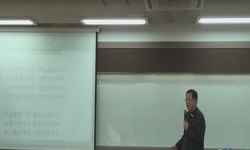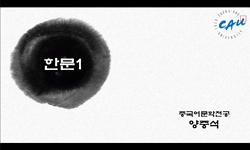The (old) novel written in eonmun had been formed a cultural position as a representative public genre from the 19th century to early modern period. It had been embraced diverse literary genres of upper and low classes, and the readers had been enjoye...
http://chineseinput.net/에서 pinyin(병음)방식으로 중국어를 변환할 수 있습니다.
변환된 중국어를 복사하여 사용하시면 됩니다.
- 中文 을 입력하시려면 zhongwen을 입력하시고 space를누르시면됩니다.
- 北京 을 입력하시려면 beijing을 입력하시고 space를 누르시면 됩니다.

언문소설의 문화적 위치와 문자적 근대의 역설-근대초기 춘향전의 매체 변이와 표기문자,독자층의 상호관련성- = The Cultural Position of Eonmun-Novel and the Paradox of Scripted Modernity-Relationship between Publication,Script,Readership of Chunhyangjeon in the Early Modern Period
한글로보기https://www.riss.kr/link?id=A99884119
- 저자
- 발행기관
- 학술지명
- 권호사항
-
발행연도
2013
-
작성언어
-
-
주제어
언문 ; 한문 ; 근대 기획 ; 고소설 ; 표기문자 ; 남원고사 ; 춘향전 ; 옥중화 ; 고본춘향전 ; 이해조 ; 최남선 ; eonmun ; Korean vernacular ; hanmun ; modernization ; old novel ; Korean classical novel ; script ; Namwongosa ; Chunhyangjeon ; Okjunghwa ; Kobon Chunhyangjeon ; Lee Haejo ; Choe Namseon.
-
KDC
900
-
등재정보
KCI등재
-
자료형태
학술저널
-
수록면
405-444(40쪽)
-
KCI 피인용횟수
12
- 제공처
-
0
상세조회 -
0
다운로드
부가정보
다국어 초록 (Multilingual Abstract)
The (old) novel written in eonmun had been formed a cultural position as a representative public genre from the 19th century to early modern period. It had been embraced diverse literary genres of upper and low classes, and the readers had been enjoyed both level of classes by reading eonmun-novel which had realized cultural competence like complexity and polyphony. In the viewpoint of cultural position, the readers of the novel were regarded as sub-cultural subjects, not as a main stream. The perspective toward them was consistently negative. However, paradoxically an activated publishing situation in the late Joseon period and severe criticism from the literati on the novel had been proved its general popularity. Lots of implied literary genres in novel weren`t cited the original version written in hanmun nor their literal translated version in eonmun. They were totally changed and inserted in eonmun-novel. In short, the implied genres in the novel were invented as forms of novel style. This meant that a genre of novel had cultural/literary competence which represented the contemporary daily life and biographical story with eonmun as a script. At the same time, it meant the public could experience the cultural things of high society and low class embracively by reading eonmun-novel. On the other hands, we can see that there was working some specific cultural recognition in the fictional genre; it was impossible to discern what was the high culture and vulgar one. This paper explained the cultural/literary meaning of the context of the hybrid script systems (eon-hanmun, eonmun-centric system with attaching hanmun supportively) with the concept of ‘paradox of modernization’ based on the essential cultural competence of eonmun-novel and the great support and sympathy from the public.
참고문헌 (Reference)
1 권순긍, "활자본 고소설의 편폭과 지향" 보고사 2000
2 이윤석, "홍길동전, 임장군전, 정을선전, 이대봉전" 경인문화사 2007
3 이윤석, "향목동 세책 춘향전 연구" 경인문화사 2011
4 박희병, "한국 전기소설의 미학" 돌베개 1997
5 이대형, "하진양문록 II권" 경인문화사 2004
6 薛盛璟, "춘향전의 계통 연구" 연세대학교 대학원 1981
7 김진영, "춘향전 전집 1" 박이정 1997
8 김동욱, "춘향전 비교 연구" 삼영사 1979
9 김일근, "추사 김정희의 언간자료 총람" 겨레어문학회 (15ㆍ16) : 1991
10 강명관, "조선후기 여항문학 연구" 창작과비평사 1997
1 권순긍, "활자본 고소설의 편폭과 지향" 보고사 2000
2 이윤석, "홍길동전, 임장군전, 정을선전, 이대봉전" 경인문화사 2007
3 이윤석, "향목동 세책 춘향전 연구" 경인문화사 2011
4 박희병, "한국 전기소설의 미학" 돌베개 1997
5 이대형, "하진양문록 II권" 경인문화사 2004
6 薛盛璟, "춘향전의 계통 연구" 연세대학교 대학원 1981
7 김진영, "춘향전 전집 1" 박이정 1997
8 김동욱, "춘향전 비교 연구" 삼영사 1979
9 김일근, "추사 김정희의 언간자료 총람" 겨레어문학회 (15ㆍ16) : 1991
10 강명관, "조선후기 여항문학 연구" 창작과비평사 1997
11 이지하, "조선후기 여성의 어문생활과 고전소설" 한국고소설학회 (26) : 303-331, 2008
12 이혜순, "조선조 후기 여성지성사" 이화여대출판부 2007
13 정주리, "조선언문실록" 고즈윈 2011
14 허경진, "조선 위항문학사" 태학사 1997
15 Bakhtin, Mikhail, "장편소설과 민중언어" 창작과비평사 1998
16 김유경, "유충렬전ㆍ정비전" 경인문화사 2005
17 전경목, "유서필지" 사계절 2006
18 이윤석, "소대성전, In 현수문정ㆍ소대성전ㆍ장경전" 혜안 2005
19 Anderson, Benedict, "상상의 공동체" 나남 2003
20 Bonnewitz, "부르디외 사회학입문" 동문선 2000
21 황현, "매천야록" 교문사 1994
22 이윤석, "남원고사 원전 비평" 보고사 2009
23 임형택, "김씨부인의 국문 상언(上言) - 그 역사적 경위와 문학적 읽기" 민족문학사학회 25 : 358-384, 2004
24 신지연, "글쓰기라는 거울" 소명출판 2007
25 심재기, "국어문체변천사" 집문당 1999
26 한문구, "국어문체변천사" 집문당 1999
27 이주영, "구활자본 고전소설 연구" 월인 1998
28 경일남, "고전소설에 삽입된 상소문의 양상과 기능" 한국언어문학회 (49) : 1-23, 2002
29 이윤석, "고소설의 표기방식" 한국고소설학회 (32) : 371-404, 2011
30 고려대학교 아세아연구소 육당전집편찬위원회, "고본춘향전, In 육당최남선전집 14권" 현암사 1974
31 윤덕진, "『남원고사』계 『춘향전』의 시가 수록과 시가사의 관련 모색" 한국시가학회 27 : 307-350, 2009
32 이윤석, "『고본춘향전』 개작의 몇 가지 문제" 한국고전문학회 (38) : 373-400, 2010
33 강진모, "『고본 춘향전』의 성립과 그에 따른 고소설의 위상 변화" 연세대학교 대학원 2003
34 박애경, "<춘면곡>을 통해 본 19세기 시정문화와 그 주변" 한국시가학회 28 : 297-326, 2010
35 오윤선, "<옥중화>를 통해 본 '이해조 개작 판소리'의 양상과 그 의미" 판소리학회 (21) : 381-413, 2006
36 최기숙, "17세기 장편소설 연구" 월인 1999
37 최기숙, "'옛 것의 근대적 소환과 ‘옛 글’의 근대적 재배치- <소년>과 <청춘>을 중심으로" 민족문학사학회 (34) : 304-335, 2007
동일학술지(권/호) 다른 논문
-
- 고려대학교 민족문화연구원
- 윤재환 ( Jae Hwan Yoon )
- 2013
- KCI등재
-
[특집,조선시대 지식,식인 생산체계 : 17~18세기 여주 이씨를 중심으로] ; 剡溪(섬계) 李潛(이잠)의 丙戌年(병술년) 上疏(상소) 연구
- 고려대학교 민족문화연구원
- 송혁기 ( Hyok Key Song )
- 2013
- KCI등재
-
[특집, 조선시대 지식,지식인 생산체계 : 17~18세기 여주 이씨를 중심으로] ; 성호 이익의 보록류 도서의 지식 원천과 성격
- 고려대학교 민족문화연구원
- 부유섭 ( Yu Seob Bu )
- 2013
- KCI등재
-
- 고려대학교 민족문화연구원
- 전성건 ( Sungkun Jeon )
- 2013
- KCI등재
분석정보
인용정보 인용지수 설명보기
학술지 이력
| 연월일 | 이력구분 | 이력상세 | 등재구분 |
|---|---|---|---|
| 2026 | 평가예정 | 재인증평가 신청대상 (재인증) | |
| 2020-01-01 | 평가 | 등재학술지 유지 (재인증) |  |
| 2017-01-01 | 평가 | 등재학술지 유지 (계속평가) |  |
| 2015-03-17 | 학술지명변경 | 외국어명 : 미등록 -> Korean Cultural Studies |  |
| 2013-01-01 | 평가 | 등재 1차 FAIL (등재유지) |  |
| 2010-01-01 | 평가 | 등재학술지 유지 (등재유지) |  |
| 2009-06-18 | 학회명변경 | 영문명 : Institute of Korean Culture -> Research Institute of Korean Studies |  |
| 2008-01-01 | 평가 | 등재학술지 유지 (등재유지) |  |
| 2005-10-18 | 학술지명변경 | 한글명 : 민족문화연구 29호 -> 민족문화연구 |  |
| 2005-01-01 | 평가 | 등재학술지 선정 (등재후보2차) |  |
| 2004-01-01 | 평가 | 등재후보 1차 PASS (등재후보1차) |  |
| 2002-01-01 | 평가 | 등재후보학술지 선정 (신규평가) |  |
학술지 인용정보
| 기준연도 | WOS-KCI 통합IF(2년) | KCIF(2년) | KCIF(3년) |
|---|---|---|---|
| 2016 | 0.77 | 0.77 | 0.7 |
| KCIF(4년) | KCIF(5년) | 중심성지수(3년) | 즉시성지수 |
| 0.71 | 0.7 | 1.385 | 0.15 |




 KCI
KCI KISS
KISS






